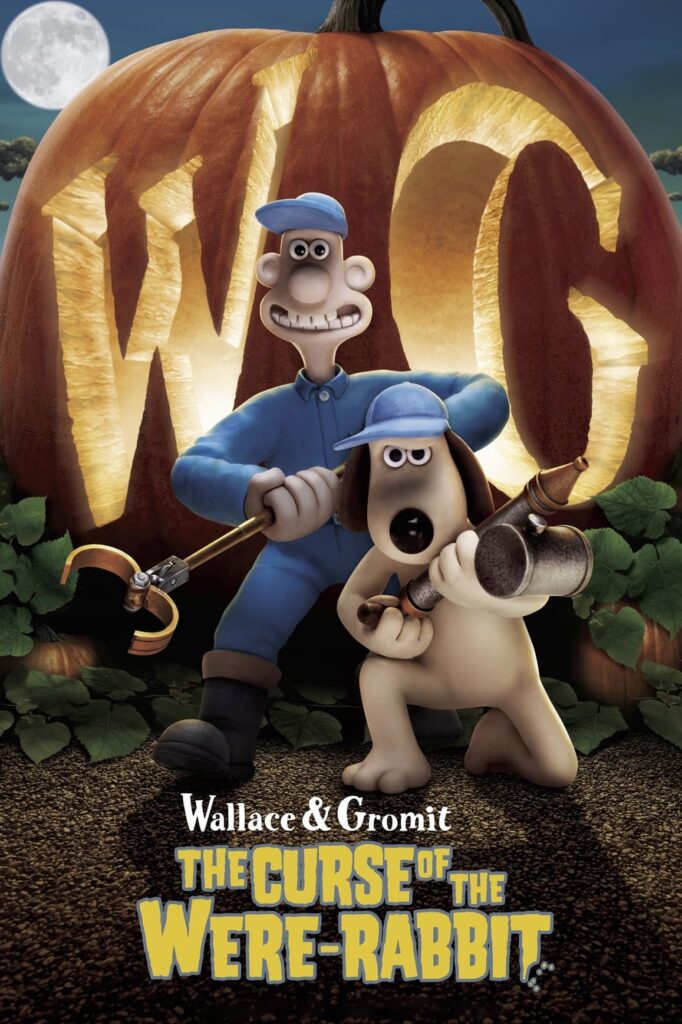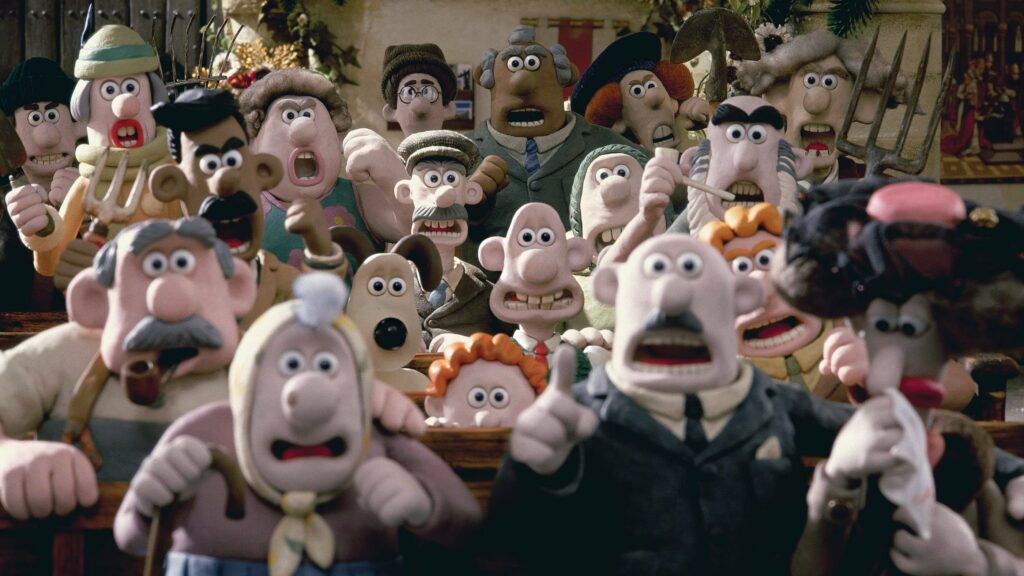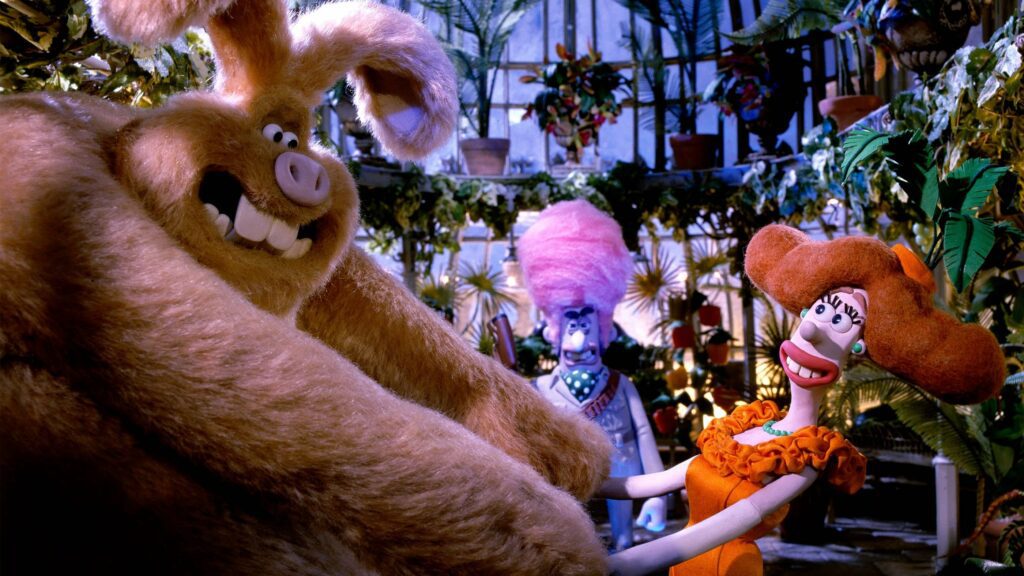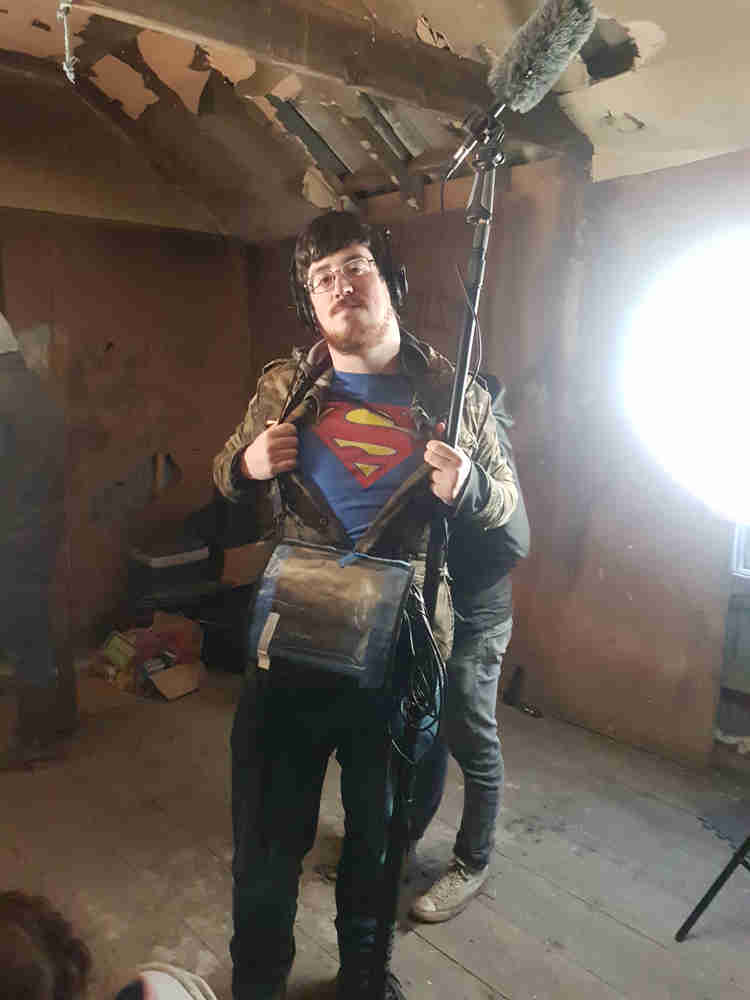By Christopher Roberts
“I would admire the films daily and want to work on a project like theirs. I also decided I wanted to create a moving piece, filled with emotions.”
– Casper Duffy
Hello everyone, it’s time for another ‘Their Favourite Film’. This time with a member of the collective whose at the start of their journey into the Film industry – Casper Duffy. A member of the Colchester branch, Casper has finished his A-levels involving animation and now does freelance work as a DOP and animator; as well as looking for more opportunities to educate himself further. With goals to work in animation, he already done a number of short stop-motion projects and has another on the way. By now, it’s probably no surprise what sort of film we will be discussing. However, this is also one that’s perfect for any parents out there, looking for a kid-friendly, spooky film, for this Halloween. I hope you enjoy, as we discuss the film dubbed: “The first ever vegetarian horror movie”.
Wallace and Gromit: The Curse of the Were-Rabbit

Casper duffy
Wallace and Gromit: The Curse of the Were-Rabbit by Aardman Animation Studios is a film I have watched for many years since childhood. I have always been hooked – as it has a strong demographic of both children and adults, it creates laughter and emotions for all and keeps you on the edge of your seat throughout.
‘Wallace’ and ‘Gromit’ (the protagonists of the series of films) are claymation, a style of stop motion. They have been one of my main influencers in making stop motion and getting into the film industry. I have also felt that the creation of the characters has played a massive role in my future outlook – I have always enjoyed creating things out of clay and any modelling material.
One of my sections in my media A-level was stop motion, for it, I had to do a lot of deep insight into the pre-production and post-production of film. When I came up with my story, I thought about clay, but in the end went with felt. I also had an animal as well as a person (just like Wallace and Gromit). As this was my primary influence, I pretty much included anything that had anything to do with them, from a toaster, to slippers, to their books of storyboards. I would admire the films daily and want to work on a project like theirs. I also decided I wanted to create a moving piece, filled with emotions.
I especially enjoyed ‘The Curse of the Were-Rabbit ‘as it is autumnal and perfect for getting into the spirit for Halloween and the change of seasons (whilst also being exciting and fun!) The chaos kept me and many others entertained as a child. The relationship between ‘Wallace’ and ‘Lady Tottington’ kept adults interested, as well as the conflict between him and ‘Victor Quartermain’.
As the film is stop motion, they have to design the pre-transformation to the post-transformation of ‘The Were-Rabbit’ as such. The part where the ears grow and pop out of his head was mechanically designed to withhold the movement of the quick pop – the ears are made out of fluffy and stretchy fabric for this. The part where his shoes stretch to show the rabbit feet – they had a mechanical part that stretched it out to the desired length and then replaced it with the foot once it burst. Each movement was designed from the start of the storyboard so they knew what direction they wanted them to move. I am fascinated with this as it is done on a small scale compared to live action but is also on a large scale as the characters need to be big to capture expression and detail. Overall ‘The Curse Of The Were-Rabbit’ is a truly beautiful film with an amazing story and animation with beautiful cinematography that I inspire to achieve.

my thoughts
For me, stop motion is one of film’s most beautiful forms of animation. Its unique style and look has always captured me and it stands out from drawn and computer-animated films. Unfortunately, it’s a lengthy process, meaning a feature-length, stop motion film can take twice as long as other types of animated films, but, if done right, you get something worth the wait.
Of course, I’ve enjoyed many stop- motion animated films over the years: The Nightmare Before Christmas and Fantastic Mr Fox spring to mind, but honestly, my love for stop-motion started at a young age – when I saw Wallace and Gromit for the first time. When it first came out, Wallace and Gromit was a series of short films about a loveable yet naive inventor and his silent but cleverer dog. They were always starting new businesses and getting into weird and wacky situations. From going to the Moon to see if it was made of cheese, to foiling a penguin plot to steal a diamond, with a pair of robot trousers. As weird situations go, their stories took the biscuit (or, in this case, the cracker).
Mixed with its British humour and (of course) its beautiful style of claymation, Wallace and Gromit became something beloved by millions across the UK. However, Aardman has only ever produced 30-minute short films of Wallace and Gromit, so when Dream Works offered the chance to make a feature-length film, the question is raised – Could they still capture what makes the shorts so good, when it goes Hollywood?
The fact Casper and I are talking about The Curse of The Were-Rabbit on a blog called ‘Their Favourite Film’ should tell you that the answer is an emphatic yes!

At first, Dreamworks wanted to make changes to the film: Including replacing the voice of ‘Wallace’ (Peter Sallis) with a more recognisable actor and changing the formula to attract an American audience. But Aardman stood their ground and refused. And so they kept to what makes the shorts so great – a unique and entertaining story, classic British humour, heartfelt moments and numerous suspense filled homages to all the classic monster movies.
Once again, it was a joy to see Wallace and Gromit on another grand adventure as ‘Wallace’ comes up with more hare-brained schemes that ‘Gromit’ has to fix when it all goes sideways. The film also has a tremendous supporting cast that makes every moment of the film a joy to watch: Including that of the pompous ‘Victor Quatermain’ (Ralph Fiennes) and elegant ‘Lady Tottington’ (Helena Bonham-Carter) with my favourite being the dramatic and rather ridiculous ‘Reverend Hedge’ (Nicholas Smith).
Casper has already gone into great detail about some of the work the animators did for the film, but I also have to praise them – for it truly is some of the best examples of stop-motion I’ve seen. They pushed the boundaries, creating some truly remarkable scenes and really showed how beautiful stop-motion can be. In the end, while the film may not have been the big blockbuster that Dreamworks wanted, we got a film loved by many and who’s to say that doesn’t make it a great film.
MY FAVOURITE FACT
Just so people can understand how long making a stop motion film can take, while filming, the studio managed to get an average of 3 seconds of usable footage per day.
Altogether, it took five years to make the film, using 2.8 tons of plasticine and 1000 baby wipes per week to wipe it off animator’s fingers.

Casper Duffy is a freelance DOP and Animator who has recently finished his A-levels in film.
Chris Roberts is a writer who has worked on many film projects across Essex as a boom operator and production assistant. Chris is also a full time film trivia expert!

